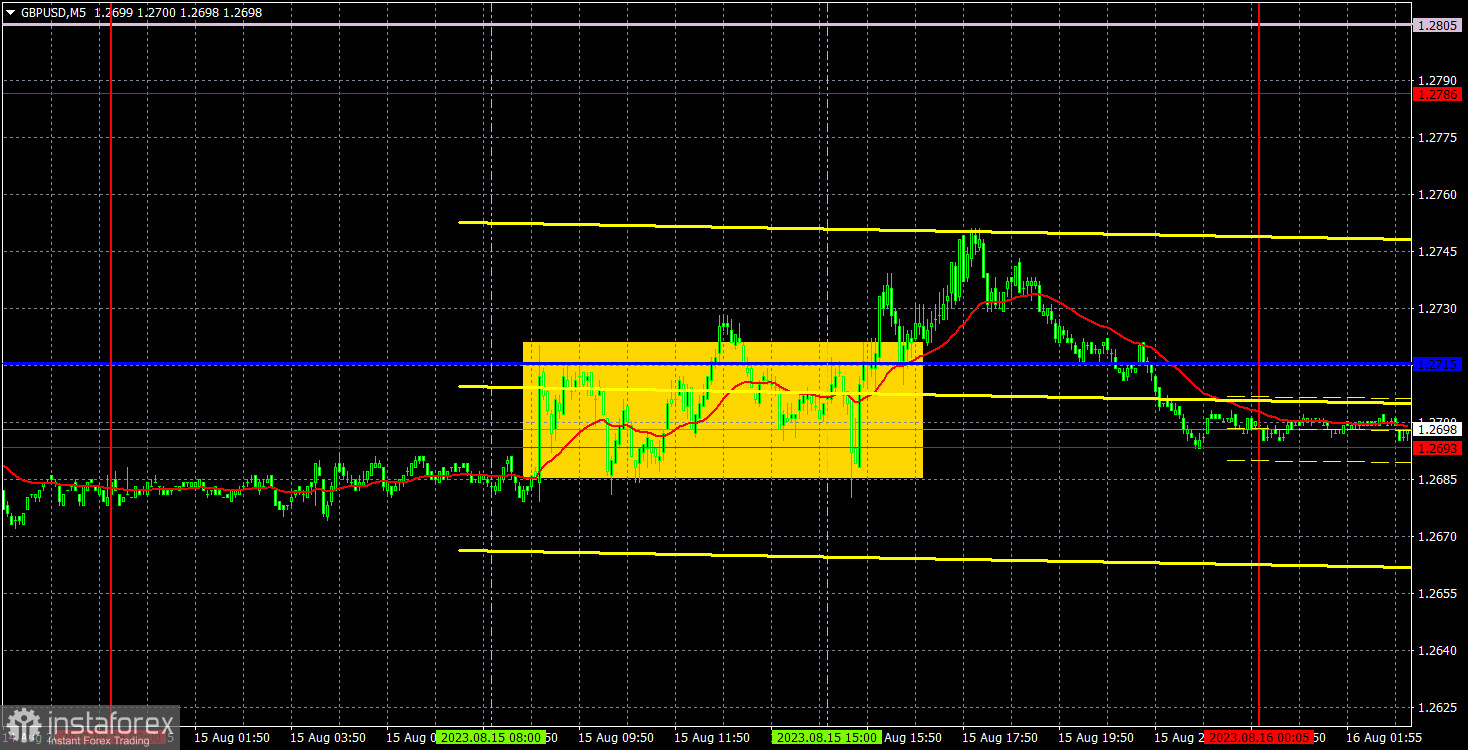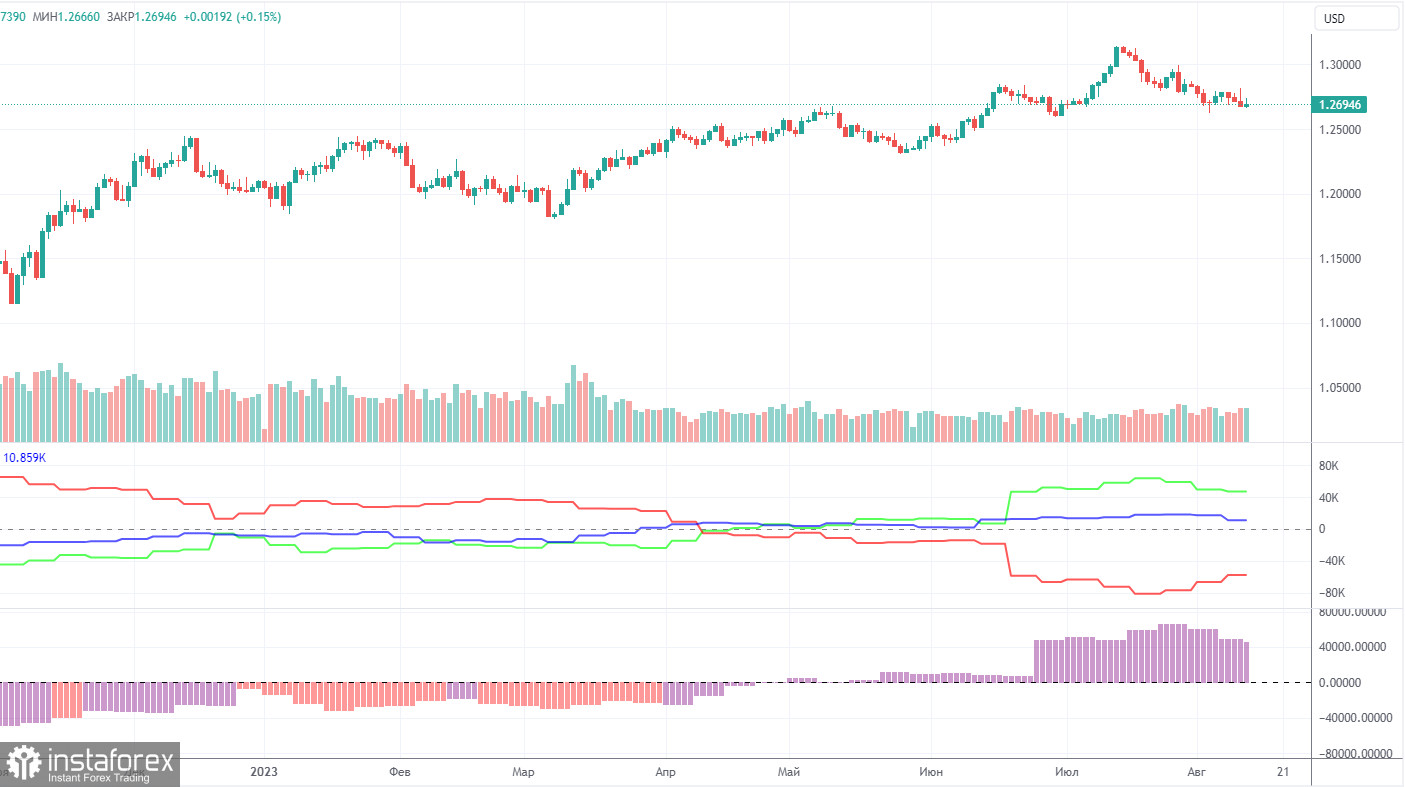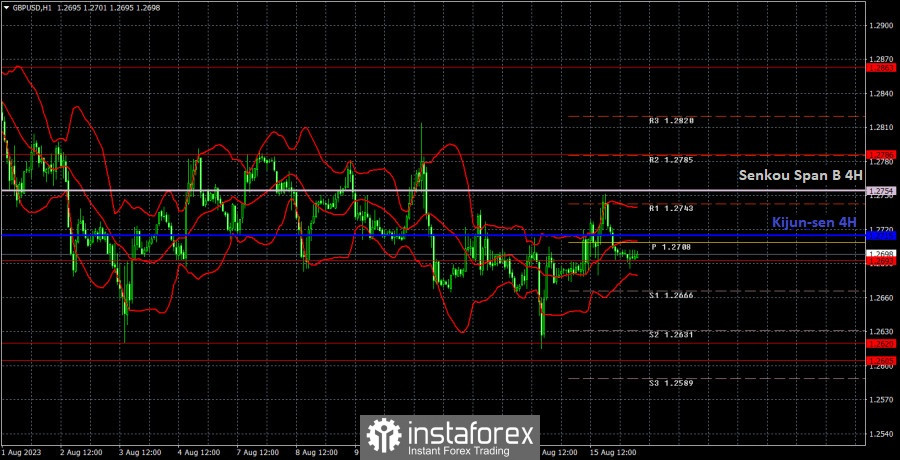Analysis of GBP/USD 5M

On Tuesday, GBP/USD tried to correct higher and also fell in the second half of the day. The macroeconomic background for the pound was slightly different, but the movements we saw were practically identical. There is also another point to take note of. With the euro, we see a weak downward movement on the hourly chart. With the pound, the price continues to trade within a fairly wide sideways channel, which is clearly visible in the chart. Therefore, the lines of the Ichimoku indicator are weak, and the movements could be confusing.
The UK released three reports that could have been interesting, but the market's reaction to them was quite strange. First, the pound rose in the first half of the day, although two reports turned out to be weaker than forecasts. Secondly, during the European session, the pair moved from side to side, and the pound did not trade any higher. The dollar was also rising, but it stopped after the release of the retail sales report, but that was a few hours later.
There was nothing to highlight in terms of trading signals. The pair spent about six hours between the Kijun-sen line and the 1.2693 level, which formed a whole area, and it only settled above it during the US session. It was dangerous to open positions, as the Stop Loss would have had to be set much lower than the entry point into the market. Thus, even if traders opened a long position, it was not possible to make profit from it – the price managed to only rise by about 20 points.
COT report:

According to the latest report, the non-commercial group of traders closed 8,900 long positions and 6,300 short ones. Thus, the net position of non-commercial traders fell by almost 2,600 positions in a week. The net position has been steadily growing over the past 11 months as well as the pound sterling. Now, the net position has advanced markedly. This is why the pair will hardly maintain its bullish momentum. I believe that a long and protracted downward movement should begin. COT reports signal a slight growth of the British currency but it will not be able to rise in the long term. There are no drivers for opening new long positions. Slowly, sell signals are emerging on the 4-hour and 24-hour charts.
The British currency has already grown by a total of 2,800 pips, from its absolute lows reached last year, which is a significant increase. Without a downward correction, the continuation of the uptrend will be illogical. However, there has been no logic in the pair's movements for quite some time. The market perceives the fundamental background one-sidedly, ignoring any data in favor of the dollar. The Non-commercial group of traders has a total of 83,200 long positions and 36,200 short ones. I remain skeptical about the long-term growth of the pound sterling, and the market has recently begun to pay attention to short positions.
Analysis of GBP/USD 1H

On the 1H chart, the pound/dollar pair continues to correct while trading within a sideways channel. The channel has slightly expanded, so this doesn't mean that the flat has ended. The lines of the Ichimoku indicator are currently weak. This does not mean that a strong signal cannot be formed around them. It means that many signals can form around them, some of which will be false.
On August 16, traders should pay attention to the following key levels: 1.2520, 1.2605-1.2620, 1.2693, 1.2786, 1.2863, 1.2981-1.2987, 1.3050. The Senkou Span B (1.2754) and Kijun-sen (1.2715) can also be sources of signals, e.g. rebounds and breakout of these levels and lines. It is recommended to set the Stop Loss orders at the breakeven level when the price moves in the right direction by 20 pips. The lines of the Ichimoku indicator can move during the day, which should be taken into account when determining trading signals. There are support and resistance levels that can be used to lock in profits.
Today, the UK will release an important inflation report, which can significantly affect the pair's movement and the prospects of the British currency. This is the main agenda for today. The US will release secondary reports on construction, industrial production, and the minutes of the July FOMC meeting.
Description of the chart:
Support and resistance levels are thick red lines near which the trend may end. They do not provide trading signals;
The Kijun-sen and Senkou Span B lines are the lines of the Ichimoku indicator, plotted to the 1H timeframe from the 4H one. They provide trading signals;
Extreme levels are thin red lines from which the price bounced earlier. They provide trading signals;
Yellow lines are trend lines, trend channels, and any other technical patterns;
Indicator 1 on the COT charts is the net position size for each category of traders;
Indicator 2 on the COT charts is the net position size for the Non-commercial group.





















